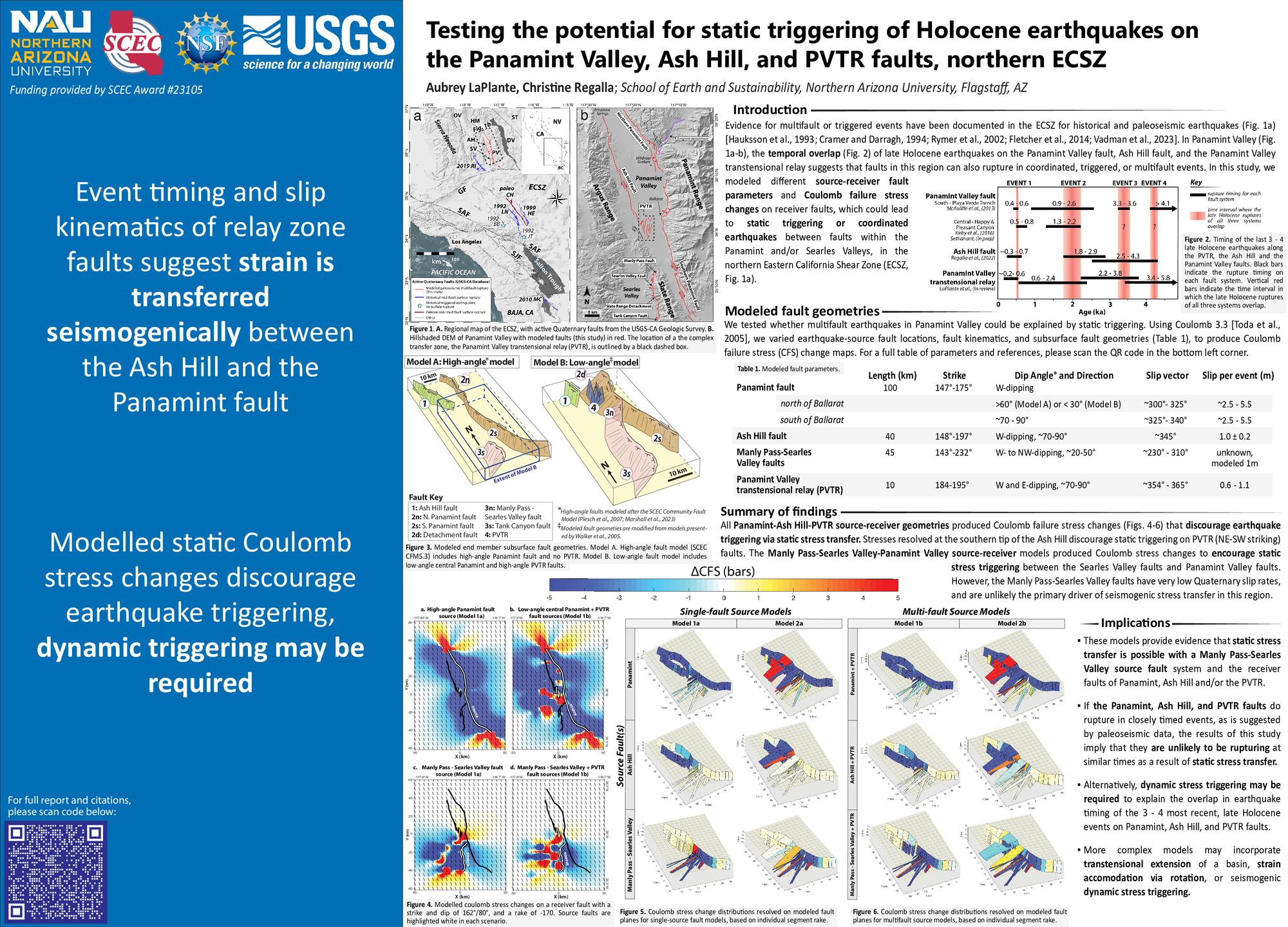Group A, Poster #097, Earthquake Geology
Testing the potential for static triggering of Holocene earthquakes on faults in the Panamint and Searles Valleys, northern ECSZ
Poster Image:

Poster Presentation
2024 SCEC Annual Meeting, Poster #097, SCEC Contribution #13777 VIEW PDF
The occurrence of several multifault or triggered earthquakes in the Eastern California Shear Zone (ECSZ) within the last ~30 years suggests that complex or triggered rupture may be common in this region. However, the fault geometries and background stress conditions that allow for strain transfer across multifault systems are still poorly defined. In this study, we evaluate the potential for static triggering between the Panamint Valley, Ash Hill, Panamint Valley transtensional relay, and Manly Pass-Searles Valley faults, located in the Panamint and Searles Valleys, California. The paleoseismic histories of these four faults suggest they may have experienced multifault or triggered ruptures during the Holocene. We used Coulomb 3.3 to model static stress changes on multiple combinations of source-receiver fault geometries to assess which rupture scenarios might promote statically-triggered ruptures on adjacent faults.
We find that rupture on all Panamint-Ash Hill-PVTR fault geometries produces negative Coulomb stress changes, which would discourage earthquake triggering via static stress transfer. Alternatively, the Manly Pass-Searles Valley-Panamint Valley source-receiver fault models produced positive Coulomb stress changes that may encourage static stress triggering. However, Manly Pass-Searles Valley faults have reportedly low Quaternary slip rates (~0.2 - 0.4 mm/yr), suggesting that it is unlikely that they are the primary source for seismogenic strain transfer between adjacent faults in the Panamint and Searles Valleys. Ultimately, we find that if the Panamint Valley, Ash Hill, and PVTR faults rupture in coordinated events, as is suggested by paleoseismic data, this process is unlikely to occur as a result of static stress transfer. More complex models that involve dynamic stress triggering, transtensional basin extension, or strain accommodation via rotation may be required to explain the seismogenic strain transfer in Panamint Valley during the Holocene.
We find that rupture on all Panamint-Ash Hill-PVTR fault geometries produces negative Coulomb stress changes, which would discourage earthquake triggering via static stress transfer. Alternatively, the Manly Pass-Searles Valley-Panamint Valley source-receiver fault models produced positive Coulomb stress changes that may encourage static stress triggering. However, Manly Pass-Searles Valley faults have reportedly low Quaternary slip rates (~0.2 - 0.4 mm/yr), suggesting that it is unlikely that they are the primary source for seismogenic strain transfer between adjacent faults in the Panamint and Searles Valleys. Ultimately, we find that if the Panamint Valley, Ash Hill, and PVTR faults rupture in coordinated events, as is suggested by paleoseismic data, this process is unlikely to occur as a result of static stress transfer. More complex models that involve dynamic stress triggering, transtensional basin extension, or strain accommodation via rotation may be required to explain the seismogenic strain transfer in Panamint Valley during the Holocene.































